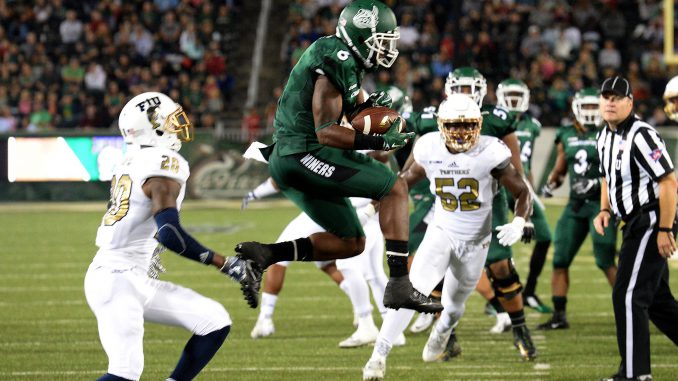College athletic recruitment 101

Hey Hollywood, how about a new television show called “So You Think You Can Be A Professional Athlete?”
The stats aren’t encouraging.
According to http://www.ncaa.org, there are a few million high school athletes, more than 460,000 NCAA student-athletes and fewer than 2 percent of them will go pro in their sports.
The probability of competing beyond high school is daunting. A chart on the site demonstrates just how challenging it is for high school athletes to become members of the NCAA and the percentage who then move onto professional sports.
In the example below the first number represents the number of high school athletes by sport, followed by the percentage who are able to play at the college level, then the percentage that move to professional sports teams and finally a summary of the percentage who move from high school to professional sports:
Football: 1,086,627; 6.5 percent; 1.6 percent; .08 percent
Men’s basketball: 538,676; 3.3 percent, 1.2 percent; .03 percent
Women’s basketball: 433,120; 3.7 percent; .9 percent; .03 percent
Men’s soccer: 410,982; 5.7 percent, 1.9 percent; .09 percent
So, if you’re still interested in pursuing playing a sport in college, here’s what you need to know. Your first order of business is to spend some time doing your homework on the following websites:
www.ncaa.org – The official web site of the National Collegiate Athletic Association. Read the NCAA guide for prospective collegiate athletes.
www.naia.org – The National Association of Intercollegiate Athletics, another governing body of college sports.
www.ncaaeligibilitycenter.org – The place where student athletes need to go to register and begin the recruitment process. The site helps students and families determine academic eligibility and amateur athlete eligibility status. Prospective student-athletes must register with the “Eligibility Center” to be considered for scholarships and financial aid.
Here are some things you’ll need to think about as you consider entering the athletic recruitment process:
- Think about the concept of “fit” – make sure the school is solid academic fit for you, as well as sports/social fit. You want to make sure you will be able to graduate in four years with a solid major and a strong transcript.
- Talk with your current coach to help determine at what level you are able to play (DI, DII, DIII).
- Be responsible in the process and don’t forget to return questionnaires, send film if requested, take standardized tests, send transcripts, etc.
- Visit as many schools as possible (unofficial). Spend some serious quality time with the coaches and other players, and ask how they are treated, how well they’re doing in their classes and what their life is like.
- Be honest throughout the process and follow the rules diligently. Be straight with the coaches recruiting you, and look for those being honest with you.
Here is a more expanded version of that research from the NCAA:
Football • About 6.5 percent, or approximately one in 16, of all high school senior boys playing interscholastic football will go on to play football at a NCAA member institution. • Less than two in 100, or 1.6 percent, of NCAA senior football players will get drafted by a National Football League team. • Eight in 10,000, or approximately 0.08 percent, of high school senior boys playing interscholastic football will eventually be drafted by an NFL team.
Men’s Basketball • Approximately one in 30, or about 3.3 percent, of high school senior boys playing interscholastic basketball will go on to play men’s basketball at a NCAA member institution. • About one in 75, or approximately 1.2 percent, of NCAA male senior basketball players will get drafted by a National Basketball Association team. • Three in 10,000, or approximately 0.03 percent, of high school senior boys playing interscholastic basketball will eventually be drafted by an NBA team.
Women’s Basketball • More than three in 100, or 3.7 percent, of high school senior girls interscholastic basketball players will go on to play women’s basketball at a NCAA member institution. • Less than one in 100, or approximately 0.9 percent, of NCAA female senior basketball players will get drafted by a Women’s National Basketball Association team. • One in 4,000, or approximately 0.03 percent, of high school senior girls playing interscholastic basketball will eventually be drafted by a WNBA team.
Men’s Soccer • Less than three in 50, or about 5.7 percent, of high school senior boys interscholastic soccer players will go on to play men’s soccer at a NCAA member institution. • Approximately 20 in 1,000, or about 1.9 percent, of NCAA senior male soccer players will be drafted by a Major League Soccer team. • More than two in 2,000, or approximately 0.09 percent, of high school senior boys playing interscholastic soccer will eventually be drafted by an MLS team.
Bierer is an independent college adviser based in Charlotte. Send questions to: lee@collegeadmissionsstrategies.com; www.collegeadmissionsstrategies.com





